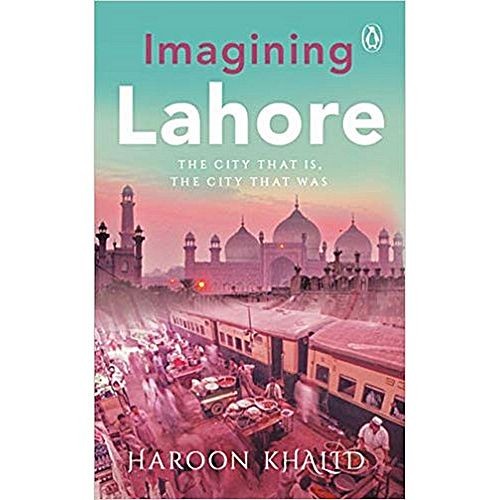
Haroon Khalid turns attention to Lahore, retelling its past by situating it in the present landscape in a book that has a constant undercurrent of fluid boundaries

Lahore, with its markers of a long and convoluted history, is a city that begs one to sit and unravel its stories. Haroon Khalid has undertaken this ambitious task in his latest book, Imagining Lahore: The city that is, the city that was. The ode to Lahore’s changing fortunes over the course of time takes its cue from the remnants of history hidden amongst its concrete jungle.
Unlike most historical accounts, the book does not narrate history through the focal point of a person or event. Instead, Khalid guides the reader on a literal walk all over the city, crisscrossing neighbourhoods and suburbs to situate the past in the city’s present landscape.
Imagining Lahore does not take a linear approach to historiography. The reader is taken backwards in time, one dilapidated monument after another. Each new wave of historical change in the city is signified by the author’s visit to a particular relic of the past. The modern-day condition of mausoleums, temples, and gurdwaras become symbols of the changing sensibilities of the city over time. The built history of the city thus assumes as central a character in the book as the people who commissioned them.
Khalid begins his journey with changes wrought by the Metro Bus and the Orange Line train, two infrastructure projects commissioned by the ‘sher of Punjab’. As a historian, Khalid’s dismay at the damage caused to historical monuments such as Chauburji and Jain Mandir is palpable. For him, these ‘demons of development’ signify an irrevocable destruction of the city’s history. References to the Sharifs’ ‘Takht-e-Lahore’ lead the reader to earlier times when other power-hungry rulers signified their authority by erasing signs of competing cultures. Now, as then, manipulating the prevalent public narrative has been the preferred tool. Tales of political tumult become intertwined with shifts in socio-religious sentiments, hard fact turning into possible myth as seamlessly as the Ravi must have once flowed past the city’s boundary.
The fluidity of boundaries is an undercurrent that runs throughout this retelling of Lahore’s past. The writer juxtaposes indications of syncretism in the region with accounts from recent history that depict the increasingly conservative environment in Lahore. Imagining Lahore also highlights an oft-overlooked component of the national historical narrative sanctioned by the state: the schisms within our Muslim society. In a country where Muslims and Hindus are depicted as the unquestionable faces of good and evil, this book raises a question mark over the gradual stigmatisation of Sufi traditions as unIslamic practices. Staying true to his usage of tangible indications of change, Khalid emphasises the weightage given to road names as just one of the markers of paranoia in recent times.
Imagining Lahore has reached the public at a very interesting time in the political life of the city, coinciding with the recently concluded general elections. One cannot help but look for parallels between the deposed government and the current popular setup. The book teems with tales of the usurper and the usurped, a topic of heated debate during these elections.
There are multiple instances in the book when the author questions the popular nationalist narrative. The city’s role as a central witness to the trauma of colonisation is portrayed as the defining point for burdening our present with conflicting sensibilities that continue to fuel unrest.
For the sheer amount of historical narrative contained within, it is a short book, making it perfect for the distracted attention spans of our times. There are no unnecessary frills to distract the reader from the sombre histories being narrated. The book’s strength lies in the accessibility of its language for readers. The complexity of literary devices is dispensed with to underscore the intricate linkages between the political and cultural past and present of Lahore. Khalid’s previous work is evidence of his meticulous research, and this offering reinforces that impression. Residents of Lahore will find themselves viewing the city in a different light after this walk through history.
The book will disappoint anyone who comes to it expecting a black-and-white comparison of the city’s historical and modern narrative. Imagining Lahore focuses on ‘the city that was’ to understand ‘the city that is’. Modern-day Lahore, from where Khalid begins the attempt to retrace the city’s layered past, continues to be as complicated an entity as the author portrays. It contains stories of the dichotomy but does not offer any simplifications. Imagining Lahore leaves the reader wondering what the city’s next avatar will be.
Imagining Lahore: The City That Is, The City That Was
Author: Haroon Khalid
Publisher: Viking, 2018
Price: Rs931
Pages: 291